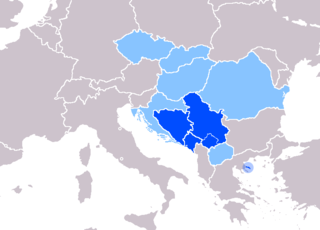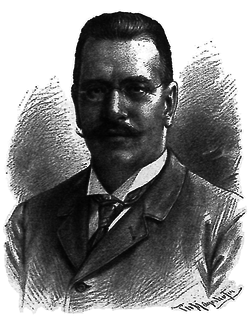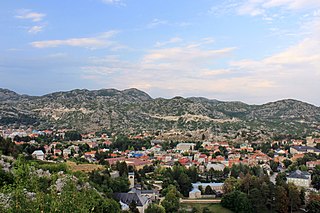The Karađorđević is a Serbian dynastic family, founded by Karađorđe Petrović, the Veliki Vožd of Serbia in the early 1800s during the First Serbian Uprising. The relatively short-lived dynasty was supported by the Russian Empire and was opposed to the Austria-Hungary supported Obrenović dynasty. After Karađorđe's assassination in 1817, Miloš Obrenović founded the House of Obrenović. The two houses subsequently traded the throne for several generations. Following the assassination of Alexander in 1903, the Serbian Parliament chose Karađorđe's grandson, Peter I Karađorđević, then living in exile, for the throne of the Kingdom of Serbia. He was duly crowned as King Peter I, and shortly before the end of World War I, representatives of the three peoples proclaimed a Kingdom of the Serbs, Croats and Slovenes with Peter I as sovereign. In 1929, the Kingdom was renamed Yugoslavia, under Alexander I, the son of Peter I. In November 1945, the throne was lost when the League of Communists of Yugoslavia seized power, during the reign of Peter II.

Petar I Petrović-Njegoš was the ruler of the Prince-Bishopric of Montenegro as the Metropolitan (vladika) of Cetinje, and Exarch (legate) of the Serbian Orthodox Church throne. He was the most popular spiritual and military leader from the Petrović dynasty. During his long rule, Petar strengthened the state by uniting the often quarreling tribes, consolidating his control over Montenegrin lands, introducing the first laws in Montenegro and a program of liberation and unification of Serbs. His rule prepared Montenegro for the subsequent introduction of modern institutions of the state: taxes, schools and larger commercial enterprises. He was canonized by the Serbian Orthodox Church as "St. Peter of Cetinje".

Danilo Šćepčević was the Metropolitan of Cetinje between 1697 and 1735. He styled himself "vojevodič srpskoj zemlji".
Šešelj is a Serbo-Croatian surname, borne by Croats and Serbs, found in Croatia, Bosnia and Herzegovina, and Serbia. It may refer to:
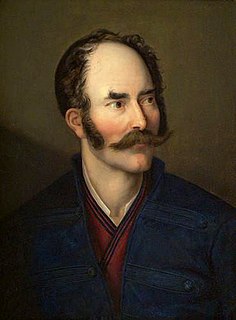
Simeon "Sima" Milutinović "Sarajlija" was a Bosnian Serb poet, hajduk, translator, historian, philologist, diplomat and adventurer.
Jovan Radonjić, commonly known as Jovo (Јово) or Joko, was the guvernadur of Montenegro between 1764 and 1803.

Medal for Bravery or Courage, commonly known as the Medal of Miloš Obilić was founded on 12 July 1913 by King Peter I, was granted to soldiers for the acts of great personal courage, or for personal courage demonstrated on the battlefield. The medal is awarded in two degree. Awarding of this medal was started during the Second Balkan War, continued during the World War I 1914-1918, and during the World War II, 1941-1945, as members of the Yugoslav Army, and members of allied forces. On the obverse of the coin is the ideal figure of Miloš Obilić, the Serbian medieval knight who was considered a model of courage and honor. He was killed by Turks during the Battle of Kosovo in 1389, since he having previously cut open the Turkish Sultan Murad I. Since then, he became a model of courageous Serbian warriors, ready to facing the inevitable defeat of sacrificing his own life. Medal for Bravery was worn on the red bar. The author was Đorđe Jovanović. The first medal for bravery was established on 14 November 1912. This medal was two degrees. This Gold medal with is worn on the red bar, and the Silver ribbon (red-blue-white). This medal was granted to very short, and has been superseded by another model. The reason for replacement was the obverse medal in which Serbia was represented by allegorical female figure. The female figure is for the Serbian soldier was unworthy motive on the medal for bravery. The officers was openly expressed dissatisfaction, after which it was decided to change the model.
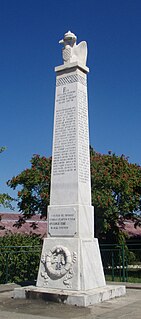
Arsenije Loma was a Serbian voivode in the First and Second Serbian Uprising of the Serbian Revolution (1804–1817). He had the rank of buljubaša and was appointed by Karađorđe to command Kačer in 1811.

Kučuk-Alija was a janissary, mutesellim of Kragujevac and one of four Dahiyas who controlled the Sanjak of Smederevo in the period between 15 December 1801 and the beginning of the First Serbian Uprising in Spring 1804. He was a brother of Sali Aga, a mutesellim of Rudnik Ottoman nahiyah at the beginning of 19th century.
Jelena Lazarević, also known, by marriages, as Jelena Balšić or Jelena Kosača, was a medieval Serbian princess, daughter of Prince Lazar of Serbia. She had a very strong personality and significantly influenced the way her husbands, first Đurađ II Balšić and second Sandalj Hranić Kosača, and her son Balša III governed their realms. Jelena encouraged them to resist Venetian encroachment on territory belonging to Zeta, the medieval Serbian state ruled by Đurađ II and then by Balša III after Đurađ II's death. She is also known as a writer in epistolary literature, particularly her correspondence with Nikon of Jerusalem, a monk in the Gorica monastery on Lake Skadar (Montenegro). Her three epistles are part of the Gorički zbornik, a medieval manuscript collection.
The Order of Miloš Obilić is an Order of the Republic of Srpska. It is established in 1993 by the Constitution of Republika Srpska and 'Law on orders and awards' valid since 28 April 1993.
Obilić is a town and municipality in central Kosovo.
Vranjina Monastery or Vranina Monastery or St. Nicholas' Monastery is a Serbian Orthodox monastery on south-east part of Vranjina island on Skadar Lake in Montenegro. Vranjina Monastery with its church dedicated to Saint Nicholas is one of the oldest monasteries in Montenegro.
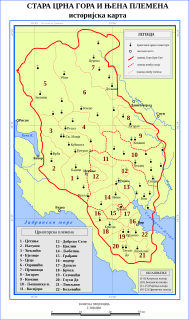
Bjelice is a historical region and tribe of the Katunska nahija of Old Montenegro. The tribe was one of the largest traditional tribes of Old Montenegro and one of nine tribes of the Katunska nahija, along with Cetinje, Njeguši, Ćeklići, Cuce, Ozrinići (Čevo), Pješivci, Zagarač and Komani.
Bijela Monastery or is a Serbian Orthodox monastery near Bijela village in Šavnik, modern-day Montenegro. The monastery was first mentioned in 1656 while according to some legends it was built in 1010 by duke Vulović from Bijela and ban Kozlina of Tušina, financially supported by Jovan Vladimir. The reconstruction of the monastery began at the end of the 20th century. Its church is dedicated to Saint George, a saint of Drobnjaci clan.

Moračnik Monastery is a Serbian Orthodox monastery on Moračnik island on Skadar Lake in modern-day Montenegro. It is positioned across from the village of Bobovište, whose residents used it as their church before they converted to Islam.

Podmaine Monastery is a Serbian Orthodox monastery built in the 15th century by the Crnojević noble family in Podmaine near Budva, Zeta The monastery has two churches, smaller and older church of Presentation of the Mother of God was built by Crnojević noble family in the 15th century while bigger church was built in 1747.

Deacon Ignjatije was a Russian deacon who accompanied Metropolitan Pimen during his travel to Constantinople at the end of the 14th century. Ignjatije was also mentioned as Grk Ignjatije of the Church of Archangel Michael in Smolensk. Together with hieromonk of his church, bishop Michail and Metropolitan Pimen he traveled to Constantinople and its region in 1389.
Savo Lazarević nicknamed Batara was Montenegrin and Yugoslav military officer.
